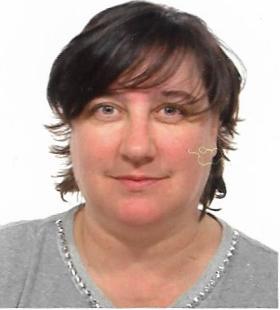Studying at the University of Verona
Here you can find information on the organisational aspects of the Programme, lecture timetables, learning activities and useful contact details for your time at the University, from enrolment to graduation.
Academic calendar
The academic calendar shows the deadlines and scheduled events that are relevant to students, teaching and technical-administrative staff of the University. Public holidays and University closures are also indicated. The academic year normally begins on 1 October each year and ends on 30 September of the following year.
Course calendar
The Academic Calendar sets out the degree programme lecture and exam timetables, as well as the relevant university closure dates..
| Period | From | To |
|---|---|---|
| FISIO VI 2^ ANNO - 1^ SEMESTRE | Oct 3, 2016 | Nov 18, 2016 |
| FISIO VI 3^ ANNO - 1^ SEMESTRE | Oct 3, 2016 | Nov 11, 2016 |
| FISIO VI 1^ ANNO - 1^ SEMESTRE | Oct 10, 2016 | Dec 21, 2016 |
| FISIO VI 2^ ANNO - 2^ SEMESTRE | Feb 27, 2017 | Apr 28, 2017 |
| FISIO VI 3^ ANNO - 2^ SEMESTRE | Feb 27, 2017 | Apr 12, 2017 |
| FISIO VI 1^ ANNO - 2^ SEMESTRE | Mar 6, 2017 | May 12, 2017 |
| Session | From | To |
|---|---|---|
| FISIO VI SESSIONE INVERNALE 2 e 3 ANNO | Dec 19, 2016 | Jan 27, 2017 |
| FISIO VI SESSIONE INVERNALE 1 ANNO | Jan 9, 2017 | Feb 3, 2017 |
| FISIO VI SESSIONE ESTIVA | Jul 3, 2017 | Jul 28, 2017 |
| FISIO VI SESSIONE AUTUNNALE | Sep 4, 2017 | Sep 29, 2017 |
| Session | From | To |
|---|---|---|
| FISIO SESSIONE AUTUNNALE | Nov 1, 2017 | Nov 30, 2017 |
| FISIO SESSIONE PRIMAVERILE | Mar 1, 2018 | Mar 31, 2018 |
| Period | From | To |
|---|---|---|
| Festa di Ognissanti | Nov 1, 2016 | Nov 1, 2016 |
| Festa dell'Immacolata | Dec 8, 2016 | Dec 8, 2016 |
| Vacanze Natalizie | Dec 23, 2016 | Jan 7, 2017 |
| Vacanze Pasquali | Apr 14, 2017 | Apr 18, 2017 |
| Festa della Liberazione | Apr 25, 2017 | Apr 25, 2017 |
| Festa dei Lavoratori | May 1, 2017 | May 1, 2017 |
| Festa della Repubblica | Jun 2, 2017 | Jun 2, 2017 |
| Vacanze Estive | Aug 14, 2017 | Aug 19, 2017 |
| FESTA DEL SANTO PATRONO Vicenza | Sep 8, 2017 | Sep 8, 2017 |
| Description | Period | From | To |
|---|---|---|---|
| FISIO VI 3^ anno - 1^semestre (1° esperienza) | FISIO VI 3^ anno - 1^semestre (1° esperienza) | Nov 14, 2016 | Dec 16, 2016 |
| FISIO VI 2^ anno - 1^semestre (1° esperienza) | FISIO VI 2^ anno - 1^semestre (1° esperienza) | Nov 21, 2016 | Dec 16, 2016 |
| FISIO VI 3^ anno - 1^semestre (2° esperienza) | FISIO VI 3^ anno - 1^semestre (2° esperienza) | Jan 30, 2017 | Feb 24, 2017 |
| FISIO VI 2^ anno - 1^semestre (2° esperienza) | FISIO VI 2^ anno - 1^semestre (2° esperienza) | Jan 30, 2017 | Feb 24, 2017 |
| FISIO VI 1^ anno - 1^semestre | FISIO VI 1^ anno - 1^semestre | Feb 6, 2017 | Mar 3, 2017 |
| FISIO VI 3^ anno - 2^semestre | FISIO VI 3^ anno - 2^semestre | Apr 19, 2017 | Jun 23, 2017 |
| FISIO VI 2^ anno - 2^semestre | FISIO VI 2^ anno - 2^semestre | May 2, 2017 | Jun 23, 2017 |
| FISIO VI 1^ anno - 2^semestre | FISIO VI 1^ anno - 2^semestre | May 15, 2017 | Jun 23, 2017 |
Exam calendar
Exam dates and rounds are managed by the relevant Medicine Teaching and Student Services Unit.
To view all the exam sessions available, please use the Exam dashboard on ESSE3.
If you forgot your login details or have problems logging in, please contact the relevant IT HelpDesk, or check the login details recovery web page.
Should you have any doubts or questions, please check the Enrollment FAQs
Academic staff
 michele.bertani@univr.it
michele.bertani@univr.it
 davideconte.bioeng@gmail.com
davideconte.bioeng@gmail.com
Cunico Laura
 laura.cunico@univr.it
laura.cunico@univr.it
Domenicali Chiara
Giacomuzzi Renata
 giada.goracci@univr.it
giada.goracci@univr.it
 marcellagulisano@libero.it
marcellagulisano@libero.it
Nai Fovino Federica
 fnajf@yahoo.it
fnajf@yahoo.it
 0444/753603
0444/753603
 elena.natale@univr.it
elena.natale@univr.it
Negrin Rolando
 segreteria.pneumo@ulssvicenza.it
segreteria.pneumo@ulssvicenza.it
 0444/753634
0444/753634
Pavan Silvana
 pavan.silvana@ulss4.veneto.it
pavan.silvana@ulss4.veneto.it
Ramondo Angelo Bruno
Randon Fabio Mario
Scapin Mario
Scarton Cinzia
Study Plan
The Study Plan includes all modules, teaching and learning activities that each student will need to undertake during their time at the University.
Please select your Study Plan based on your enrollment year.
1° Year
| Modules | Credits | TAF | SSD |
|---|
2° Year activated in the A.Y. 2017/2018
| Modules | Credits | TAF | SSD |
|---|
3° Year activated in the A.Y. 2018/2019
| Modules | Credits | TAF | SSD |
|---|
| Modules | Credits | TAF | SSD |
|---|
| Modules | Credits | TAF | SSD |
|---|
| Modules | Credits | TAF | SSD |
|---|
Legend | Type of training activity (TTA)
TAF (Type of Educational Activity) All courses and activities are classified into different types of educational activities, indicated by a letter.
Career prospects
Module/Programme news
News for students
There you will find information, resources and services useful during your time at the University (Student’s exam record, your study plan on ESSE3, Distance Learning courses, university email account, office forms, administrative procedures, etc.). You can log into MyUnivr with your GIA login details: only in this way will you be able to receive notification of all the notices from your teachers and your secretariat via email and soon also via the Univr app.
Graduation
Documents
| Title | Info File |
|---|---|
|
|
pdf, it, 367 KB, 19/02/24 |
|
|
pdf, it, 142 KB, 19/01/24 |
|
|
pdf, it, 862 KB, 19/01/24 |
|
|
pdf, it, 273 KB, 25/03/24 |
Gestione carriere
Student login and resources
Appelli d'esame
Si pubblicano gli appelli per la sessione estiva per il 2° anno A.A 2023/2024
Si pubblicano gli appelli per la sessione estiva per il 1° e 3° anno A.A. 2023/2024
Documents
| Title | Info File |
|---|---|
|
|
pdf, it, 426 KB, 23/04/24 |
|
|
pdf, it, 419 KB, 08/04/24 |
|
|
pdf, it, 412 KB, 23/04/24 |
Orario lezioni
AVVISO ACCOGLIENZA STUDENTI 1° A a.a 2023/2024
CALENDARIO DIDATTICO 2023/2024
Si pubblica il calendario dellle lezioni 3° anno 2 semestre 2023/2024
AGGIORNAMENTO 7 MARZO 2024 Calendario lezioni 1° A 2° semestre
Documents
| Title | Info File |
|---|---|
|
|
pdf, it, 215 KB, 07/03/24 |
|
|
pdf, it, 114 KB, 21/09/23 |
|
|
pdf, it, 156 KB, 12/10/23 |
|
|
pdf, it, 229 KB, 06/02/24 |
Attività Seminariali/a scelta dello studente
Attività Seminariali/a scelta dello studente



























